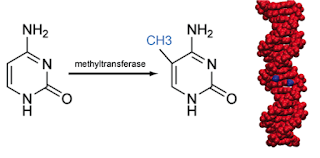Genome methylation analysis with Bismark

Bismark is currently the de facto standard for primary analysis of high throughput bisulfite sequencing data. Bismark can align the reads to the genome and perform methylation calling. In this post, I'll go through Illumina whole genome bisulfite sequence (WGBS) alignment and methylation calling using Bismark. First I want to mention that this post is just a summary, not meant to be a user manual or thorough troubleshooting guide. Fortunately, Bismark has some of the best documentation for any bioinformatics suite and is mandatory reading. The Bismark crew are very proactive with responding to user queries on various forums as well. First step in getting Bismark to work is to index the genome, in this case with Bowtie2: bismark_genome_preparation --bowtie2 /pathto/refgenome/ Conventionally, multiplexed libraries will be sequenced over a number of lanes. Resist concatenating or merging the smaller fastq files for each patient/sample until after the alignment, as the c...
